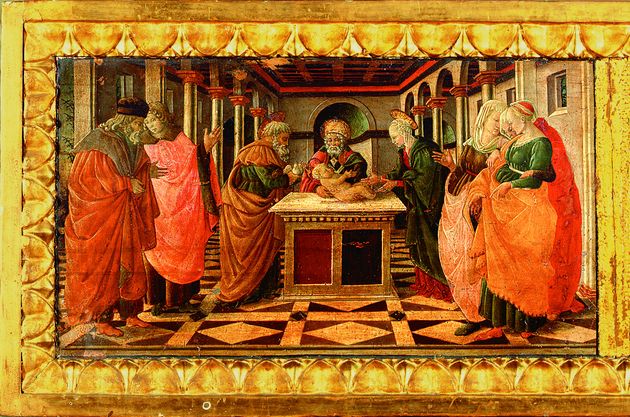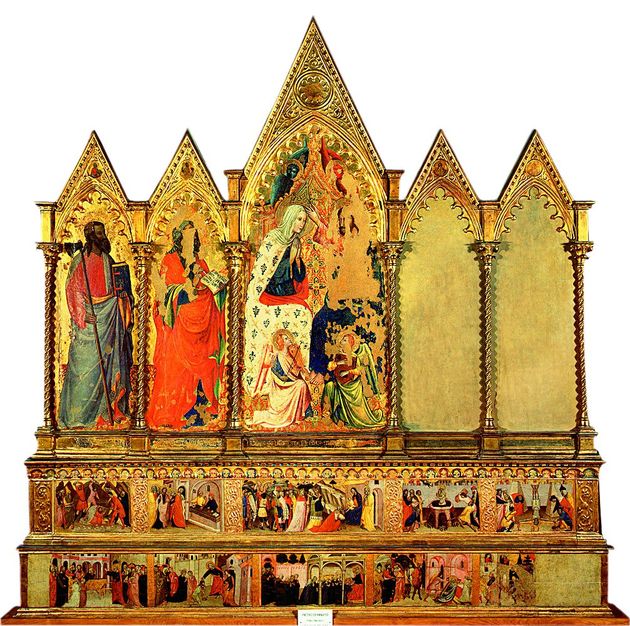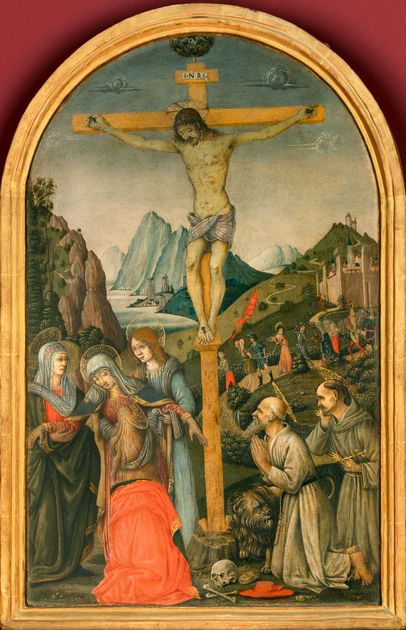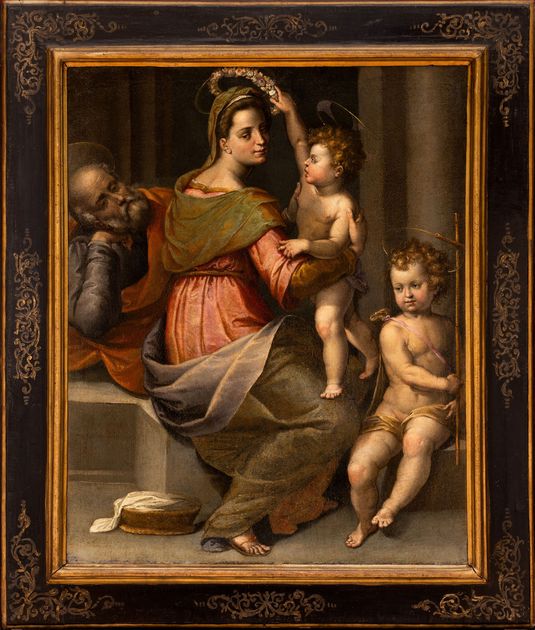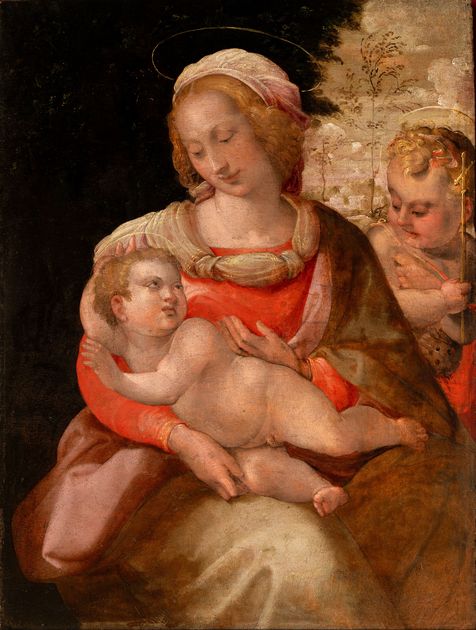In Renaissance workshops, when pupils reached a certain level in their training they collaborated according to their abilities in the execution of the works, sometimes making copies of subjects created by the master, which were often requested for home devotion. This also happened in Prato in the workshop of Filippo Lippi, where the small museum painting done by the master in collaboration with Fra Diamante (as suggested by the strong resemblance to some figures of the Madonna of the Belt for Santa Margherita, traditionally attributed to Filippo’s collaborator) was replicated at least twice in the workshop. The two lower-quality versions are in the Prato Museum of the Opera del Duomo (Cathedral Works) and the Musée du Petit Palais in Avignon.The complex, refined room described in the panel, with its very precise central perspective, is decorated with multicoloured inlaid marble and coffer ceilings, and is divided by a double arch on a black marble column with an Ionian capital. In the lower part, the quiet, intimate scene of the annunciation of the angel to Mary takes place, with luminous, studied figures. The presence behind Gabriel of St. Julian, whom the palm leaf erroneously indicates as a martyr, might be due to the revival of this legendary saint’s cult after the presumed discovery of his left arm in the cathedral of Macerata in 1442. In the window behind Mary we can make out a dawn garden with trees and a cypress, a possible allusion to the Annunciation as the dawn of a new Christian era.
Other works in the museum collection by Filippo Lippi are: The Ceppo Madonna, the Nativity and the Madonna of the Belt.











